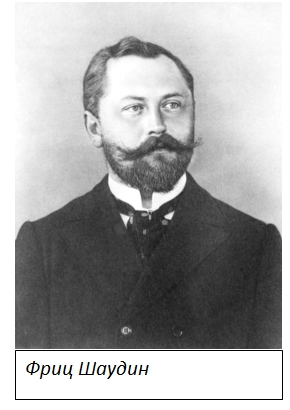Syphilis can be called one of the most mysterious diseases that humanity has encountered. Pale treponema eluded scientists for many centuries before it was once discovered under the microscope of a young and ambitious microbiologist, Fritz Schaudin.
Today, syphilis has become almost a part of history, and doctors are already faced with its late manifestations, however, there were times when it caught up with incredible fear and horror. Read on estet-portal.com what path mankind had to go through in order to discover the causative agent of syphilis.
The causative agent of syphilis: a story as old as the world
It is believed that the causative agent of syphilis – pale treponema existed on the planet long before the advent of mankind.
The ancient myth says that the shepherd Syphilus was punished by the gods for his vicious behavior with this particular disease.
Although syphilis was the "punishment of the gods" at the dawn of mankind, today this disease scares almost no one.
STDs: What you need to know about syphilis
The first mention of a disease similar to syphilis can be found in Hippocrates. He is believed by modern researchers to describe genital warts, which are a common manifestation of secondary recurrent syphilis.

Syphilis: a disease of all peoples and nations
In the 15th century, when the world was struck by a terrible epidemic of this disease, various theories of the origin of syphilis began to emerge, among which three main ones can be distinguished:
I. American, which was based on the assumption that it was Columbus who brought this terrible disease from America.
II. African. This theory was based on the fact that a disease similar to syphilis was common in African llamas, and due to contact with these animals, the pathogen mutated and became infectious for humans.
III. European. Proponents of this theory argued that syphilis existed in Europe even before the travels of Columbus. This was confirmed by the excavation data: the remains were found, with traces of syphilis.
Syphilis has many masks and as many names. Each nation tried to isolate itself from this venereal disease, attributing its spread to another nation. Thus, syphilis was called "Spanish", "French", "Portuguese" disease.
Typical and atypical signs of syphilis: how to recognize the disease in time
A fatal mistake in the search for the causative agent of syphilis

For almost 300 years, the search for the causative agent of syphilis has been conducted, and the disease continued to affect an increasing number of people. Doctors were so scared of him that any changes in the genital area were considered syphilis. This is how the Unitarian movement arose.
One of the admirers of this theory was the authoritative doctor Gunther. To prove his case, he instilled in himself the blood of a gonorrhea patient, and a hard chancre appeared at the injection site. A fatal accident - this patient was ill with both syphilis and gonorrhea, but it was this mistake that extended the life of the false unitary current.
For more interesting articles visit Facebook!
Syphilis: the search for truth is more valuable than ethical principles
Anonymous German doctor provided studies in which he proved that syphilis and gonorrhea – they are different diseases. The reason for his anonymity was that in order to find the truth, he infected healthy people with these diseases. His discovery gave impetus to a series of similar studies.
In search of the causative agent of syphilis, doctors infected themselves, their assistants, volunteers, conducted research on prison inmates.
The search for the causative agent of syphilis was cruel, merciless, and devoid of hope, because in 25 years 125 pathogens of this disease were proposed, none of which was the cause of syphilis.
The causative agent of syphilis was found: the truth that they could not believe
In 1905, a young and ambitious microbiologist, Fritz Schaudin, set about searching for the causative agent of syphilis. His assistant was the clinician Erich Hoffmann, who ran a clinic for patients with syphilis. Shaudin studied numerous blood smears of patients with syphilis. He found that in them the erythrocytes encounter some kind of obstacle, namely, a spiral-shaped microorganism, which was the causative agent of syphilis – pale treponema.
Scientists made a report in which they made public their discovery, but no one took them seriously, because all 125 previous attempts were unsuccessful. Then Shaudin decided to confirm his discovery. He analyzed the blood smears of monkeys experimentally infected with syphilis, and they also found a mysterious spirochete.
So in 1905, the causative agent of syphilis was discovered, and although for a long time after that a successful treatment of this disease was sought, it was this discovery that became a key event in the history of all mankind.
You may also be interested in: What are the basic principles of syphilis treatment







Add a comment